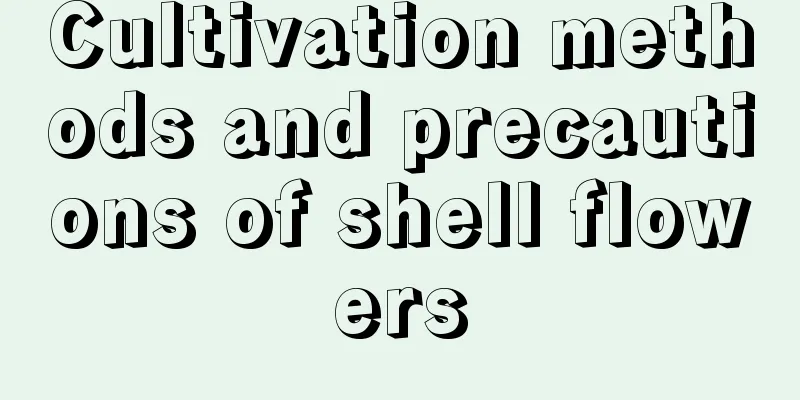Cultivation methods and precautions of shell flowers

How to grow shell flowerPot soil selectionWhen growing shell flowers, you need to decide the size of the flowerpot based on the condition of the plant. Generally, you can plant 10 to 15 seeds in a flowerpot with a diameter of 15 cm. The soil needs to be fertile and well-drained potting soil, not too sticky, otherwise it will affect the growth of the plant. Just choose garden soil with good drainage. Light and temperatureShell flowers like sunlight and prefer a warm living environment. During the maintenance process, sufficient light needs to be maintained, but avoid exposure to the sun in summer to avoid burns. The suitable temperature for growth is 15℃-30℃. Watering and fertilizingShell flowers require reasonable operations in terms of water and fertilizer management. Water frequently during the seed germination period, and after the seedlings grow out and survive, water and fertilize normally. Watering depends on the water shortage of the shell flower. If the soil is moist, there is no need to water it, but when you do, water it thoroughly. Fertilization can be applied once or twice a month, and stop fertilizing after flowering. Reproduction methodThe propagation of shell flowers is mostly carried out by sowing, which can be done in spring, summer and autumn. Ensure suitable temperature and germination will be faster. It can be transplanted when it grows 6 leaves. It is best to transplant with soil. In order to obtain good ornamental effects, it can be planted in batches. Precautions for the cultivation of shell flowersToppingShell flowers need to be pinched during their growth process in order to have more branches and shape them into a certain shape. Pests and diseasesShell peanuts are relatively hardy and have relatively few diseases and pests, but sometimes they may be harmed by leaf miners. It is necessary to observe the growth of the plants regularly, detect diseases in time, and take preventive and control measures. |
<<: Cultivation methods and precautions of Camellia Impatiens
>>: Sage cultivation methods and precautions
Recommend
What fertilizer is best for Clivia to grow well (What fertilizer is best for Clivia to bloom)
What fertilizer is best for Clivia As for the pla...
The difference between azalea and rhododendron
1. Origin The Western rhododendron has a special ...
How to grow copper coin grass
Leaves are sparse Not everyone's pennywort gr...
Why do succulents grow fast in greenhouses?
1. High temperature and high humidity Greenhouses...
Does Yushu like the sun?
Yushu likes the sun Jade plant likes the sun and ...
Is Begonia poisonous?
Is this plant poisonous? Although we say that thi...
Can the flower of good luck be placed in the bedroom?
The flower of smooth sailing is not poisonous The...
What flowers are suitable for growing in Rizhao? What are the city flowers and trees?
1. Climate characteristics of Rizhao Rizhao has a...
What is the best soil for planting peonies? What is the best soil for planting peonies in pots?
Peony, with its large and colorful flowers, is a ...
Differences between Sonchus and Dandelions
1. Leaf Difference The leaves of Sonchus endive a...
Is it profitable to grow flowers? Profits and benefits of growing flowers
Is growing flowers profitable? There are many var...
How to grow and maintain potted Panax notoginseng
Potted cultivation method of Panax notoginseng 1....
How to remedy the problem that Milan flowers lose leaves when touched?
Milan is a common flower with a strong fragrance ...
Rice growing conditions and characteristics
Rice growing conditions Rice is a short-day crop ...
Pictures of the cutting method of Kalanchoe longevity flower, the cutting propagation method and precautions of Kalanchoe longevity flower
It is usually better to take cuttings of Kalancho...









